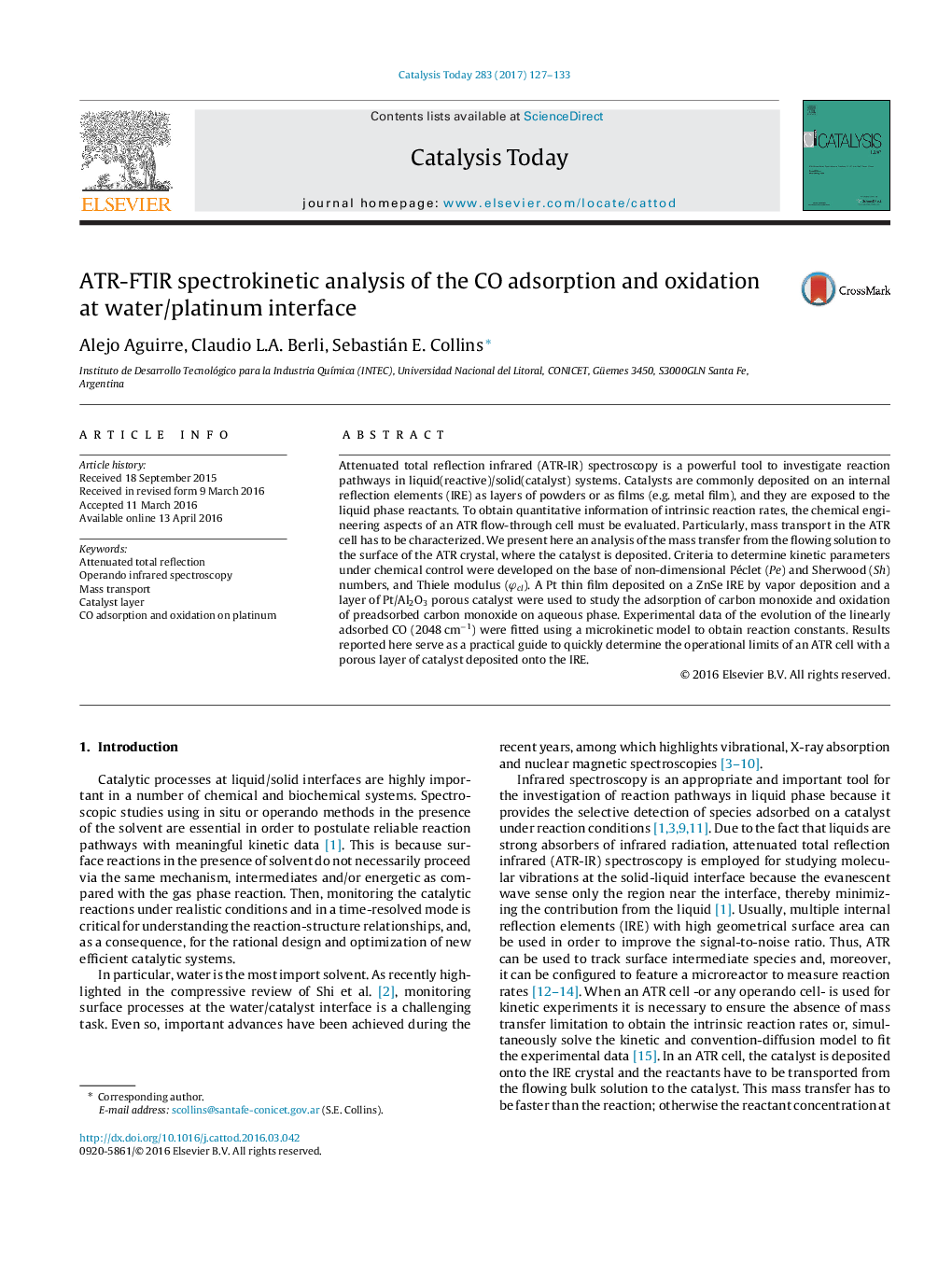| Article ID | Journal | Published Year | Pages | File Type |
|---|---|---|---|---|
| 6455274 | Catalysis Today | 2017 | 7 Pages |
â¢Attenuated total reflection microfluidic cell is used for operando studies.â¢Mass transport of the reactants into the catalyst layer is characterized.â¢Criteria to operate under chemical control are presented.â¢Aqueous CO adsorption and oxidation on platinum catalyst is studied.
Attenuated total reflection infrared (ATR-IR) spectroscopy is a powerful tool to investigate reaction pathways in liquid(reactive)/solid(catalyst) systems. Catalysts are commonly deposited on an internal reflection elements (IRE) as layers of powders or as films (e.g. metal film), and they are exposed to the liquid phase reactants. To obtain quantitative information of intrinsic reaction rates, the chemical engineering aspects of an ATR flow-through cell must be evaluated. Particularly, mass transport in the ATR cell has to be characterized. We present here an analysis of the mass transfer from the flowing solution to the surface of the ATR crystal, where the catalyst is deposited. Criteria to determine kinetic parameters under chemical control were developed on the base of non-dimensional Péclet (Pe) and Sherwood (Sh) numbers, and Thiele modulus (Ïcl). A Pt thin film deposited on a ZnSe IRE by vapor deposition and a layer of Pt/Al2O3 porous catalyst were used to study the adsorption of carbon monoxide and oxidation of preadsorbed carbon monoxide on aqueous phase. Experimental data of the evolution of the linearly adsorbed CO (2048Â cmâ1) were fitted using a microkinetic model to obtain reaction constants. Results reported here serve as a practical guide to quickly determine the operational limits of an ATR cell with a porous layer of catalyst deposited onto the IRE.
Graphical abstractDownload high-res image (148KB)Download full-size image
